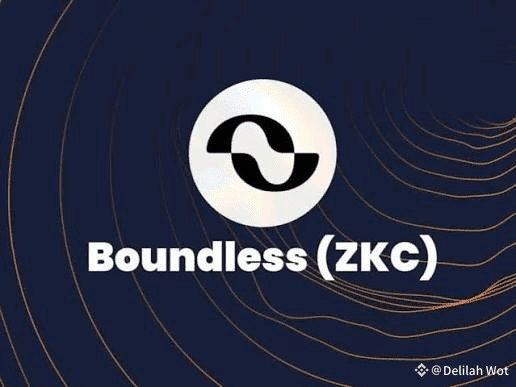The Architecture of Connection How Web3 Is Finally Becoming One”
For the past decade, blockchain has been on a remarkable journey one that began with the dream of decentralization and freedom. Yet somewhere along the way, it fragmented.
Each network built its own rules, liquidity, and loyal community. But like cities separated by vast oceans, they rarely interacted. What began as a movement to connect humanity through code slowly turned into an archipelago of innovation powerful, but divided.
Now, a quiet revolution is unfolding. One that doesn’t seek to create another chain, but to weave them all together.
The Invisible Walls of Innovation
Every ecosystem from Bitcoin’s minimalism to Ethereum’s flexibility to Solana’s speed represents a masterpiece in its own right. But in isolation, even the most advanced system becomes limited.
DeFi traders jump through bridges, NFT collectors struggle with incompatible standards, and developers rewrite smart contracts for every new chain.
Web3 promised freedom, yet users remain locked inside invisible walls.
That’s why the next chapter of blockchain isn’t about speed or yield it’s about connection.
From Bridges to Boundaries Broken
In the beginning, cross-chain bridges seemed like the answer. They promised easy transfer of tokens between ecosystems. But the reality turned harsh billions lost to exploits, broken trust, and over-engineered complexity.
The lesson was clear:
> “If we can’t trust intermediaries, we must design systems where trust isn’t needed at all.”
That’s where zero-knowledge cryptography emerged as a turning point.
Instead of building fragile bridges, new protocols began constructing proof-based corridors mathematically verified, transparent, and self-sustaining.
This was the birth of boundless interoperability where data, assets, and logic could flow without middlemen.
The Rise of Cross-Chain Intelligence
The next evolution of decentralized systems isn’t about chains talking it’s about them understanding each other.
Cross-chain interoperability is no longer a buzzword; it’s the foundation for a global blockchain economy.
Imagine a world where:
A token created on one chain could instantly participate in liquidity pools on another.
Smart contracts could interact across ecosystems in real time.
Identity, reputation, and ownership could persist wherever users go.
That’s the kind of Web3 that innovators are quietly building a network that behaves more like an organism than a collection of islands.
And somewhere in that ecosystem, one network’s research around ZK-based interoperability and multi-chain execution has become the backbone of this movement.
Their vision is simple:
To make blockchains disappear from the user’s perspective and let the experience take center stage.
Redefining the Role of the Token
In this new paradigm, tokens like $ZKC are no longer just speculative instruments. They act as connective energy securing validators, rewarding liquidity, and enabling governance across the ecosystem.
It’s not just about transaction fees or staking rewards. It’s about coordination.
Each node, developer, and user becomes a participant in a living network that expands organically as more activity flows through it.
That’s how decentralization matures not by isolating power, but by distributing it intelligently.
ZK-Proof: The Trustless Fabric
Zero-knowledge technology has done for Web3 what encryption did for the early internet made privacy, efficiency, and verification coexist.
In the context of interoperability, ZK-proofs ensure that every action executed across networks is mathematically confirmed, without requiring any centralized checkpoint.
It’s the end of “trusted bridges” and the dawn of trustless synchronization.
This approach isn’t theoretical anymore. It’s being actively implemented in systems experimenting with cross-chain data verification, liquidity routing, and even on-chain governance that spans multiple ecosystems all powered by ZK computation.
Developers at the Core
At the heart of any technological leap are the builders developers who take raw infrastructure and turn it into experiences.
What makes the new generation of interoperability layers remarkable is their accessibility.
Developers can now integrate multi-chain functionality through lightweight SDKs, without mastering a dozen separate ecosystems.
For the first time, cross-chain doesn’t mean complex it means composable.
Builders can focus on crafting applications, not solving infrastructure puzzles.
Governance as a Living Mechanism
A decentralized ecosystem is only as strong as its governance.
In the emerging multi-chain paradigm, token holders use their voting power not just to decide upgrades, but to guide the future direction of connectivity itself.
Every vote becomes a signal shaping which features expand, which networks integrate next, and how economic incentives evolve.
This transforms governance from bureaucracy into collaboration a community-driven compass for long-term growth.
The Coming Era of Boundless Systems
The boundaries between blockchains are fading.
What once were isolated ledgers are becoming nodes of a larger global network a Boundless web of cooperation.
That word doesn’t just describe a project; it describes a mindset.
One that believes decentralization doesn’t mean disconnection it means harmony without hierarchy.
The movement toward interoperability is the ultimate expression of Web3’s ethos:
No single chain rules. Every participant contributes.
And somewhere in that shared architecture of freedom, Boundless #Boundless $ZKC continues to quietly fuel the infrastructure that makes it all possible.
Closing Thoughts
The internet connected information.
Blockchain connected value.
The next revolution will connect everything users, data, liquidity, and identity across a single interoperable mesh.
It’s not about who wins the race between blockchains.
It’s about building roads where everyone runs together.
That’s how decentralization fulfills its promise not through isolation, but through unity.


